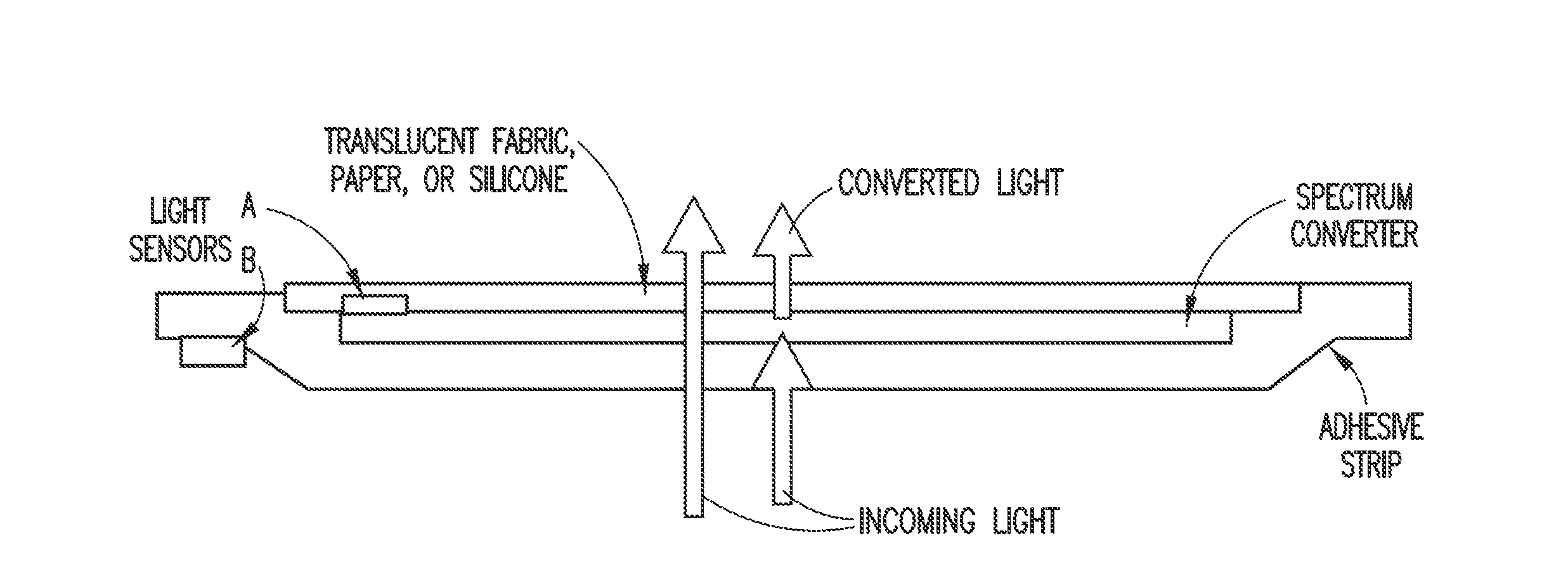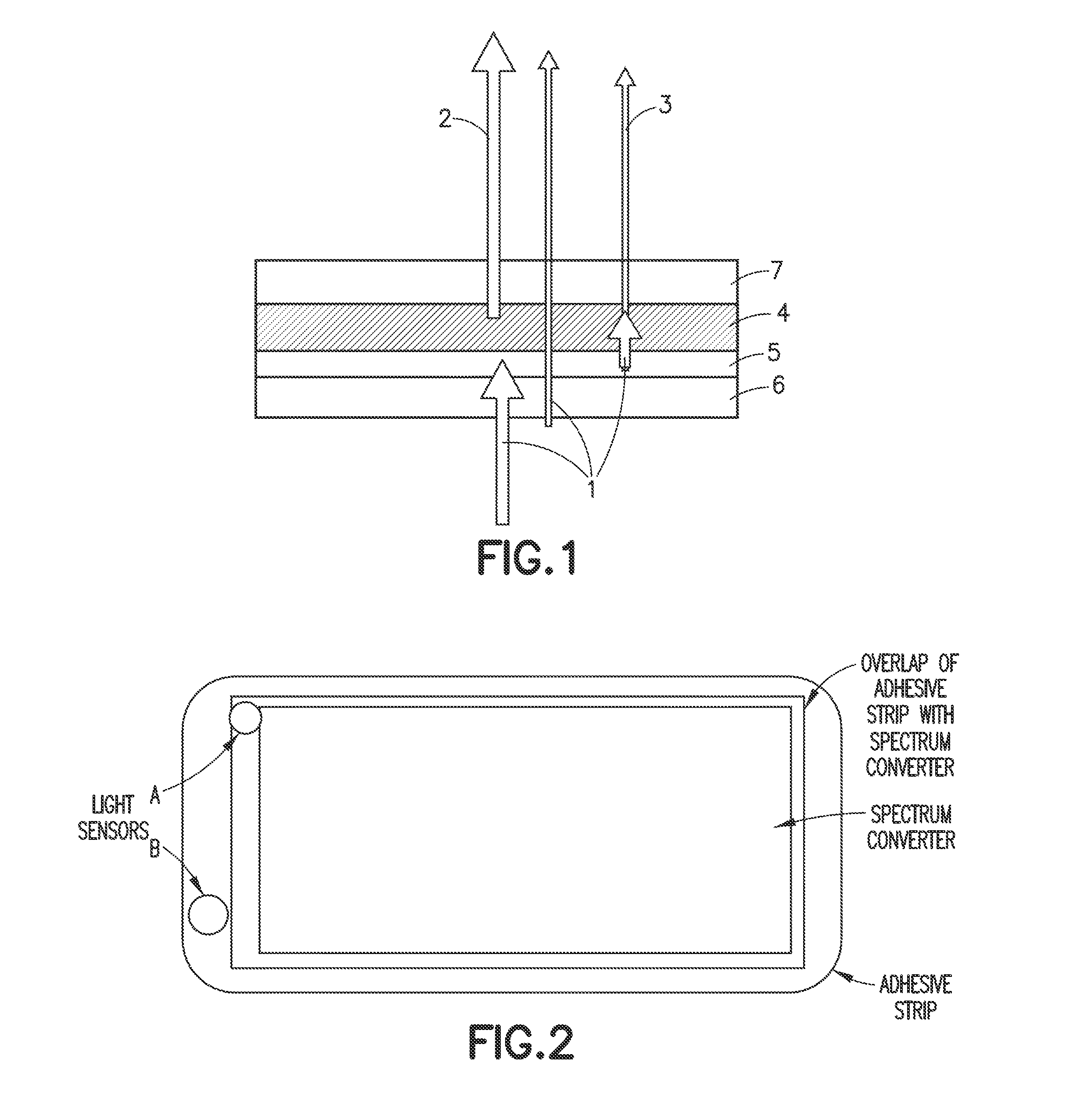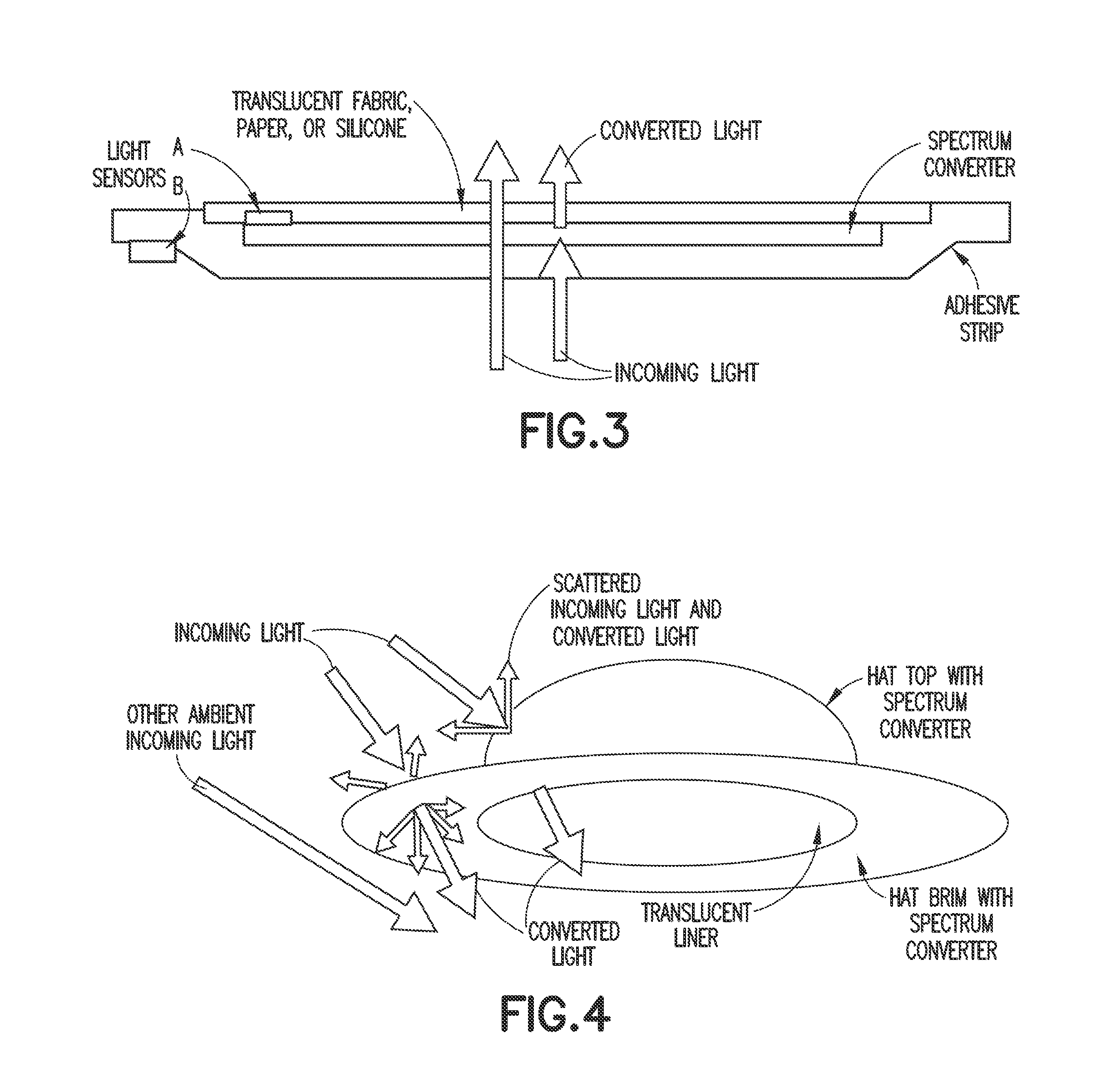Ambient spectrum light conversion device
a light conversion device and spectrum light technology, applied in the field of spectrum light conversion devices, can solve the problems of high cost, poor extinction coefficient in the desired spectral range, and relatively low overall light spectrum conversion efficiency of light spectrum conversion technologies, etc., to achieve the effect of reducing the amount of dye, increasing the effective intensity of light available, and high quantum yield
- Summary
- Abstract
- Description
- Claims
- Application Information
AI Technical Summary
Benefits of technology
Problems solved by technology
Method used
Image
Examples
embodiment 1
[0110]Referring now to the drawings, FIG. 1 is a schematic representation of a spectrum converter for ambient light according to one embodiment of the present disclosure, comprising a transmissive photoluminescent converter (“Embodiment 1”). This embodiment is advantageously employed to maximize ONIR light output from ambient sunlight. The ambient light converter device may be fabricated, using a sequence of non-toxic organic dyes is selected that can put into solution in a variety of polymers.
[0111]In FIG. 1, two arrows 1 pointing into the device represent incoming sunlight or other bright ambient white light. The arrow that passes completely through the device represents unconverted visible incoming light, which is typically under 10% for this exemplified device. The upper arrow 2 pointing out of the device represents converted ONIR light exiting the device. The two-part arrow 3 originating in the device represents violet and blue light from the UV converter layer that is at least...
embodiment 2
[0118]FIG. 2 is a schematic top plan view of a spectrum converter for ambient light according to another embodiment of the disclosure, comprising a spectrum converter useful for photodynamic therapy (“Embodiment 2”).
[0119]In FIG. 2, a top view of a bandage-style device for PDT is illustrated. This device can be similar in cross sectional detail to Embodiment 1, but with an adhesive perimeter added. Tape and other perimeter straps may be used to hold such a pad in place, or the patch can be held in place directly with adhesive or just by the use of a very soft silicone with natural temporary adherence, such as a 0.1-2 mm thick transparent Durometer 5-10 hardness silicone gel pad. Many other bandage materials could be used that are reasonably translucent, since transparency is not necessarily a requirement, provided that suitable transmissivity is present. The size of this device can be any size required for the area to be treated. For PDT, these areas frequently are only a few square...
embodiment 3
[0121]FIG. 4 is a perspective schematic view of a spectrum converter for ambient light according to another embodiment of the disclosure, comprising a spectrum converter hat (“Embodiment 3”). As illustrated, the top head-engaging portion of the hat, as well as the brim of the hat, may incorporate a spectrum converter device in accordance with the present disclosure. The top portion of the hat may feature a liner, which may comprise a spectrum converter liner. The liner may be translucent. The hat therefore provides converted ambient light to the head and facial regions of the wearer. The spectrum converters in the hat may include dyes or phosphors that are optimized for a particular photosensitizer.
PUM
 Login to View More
Login to View More Abstract
Description
Claims
Application Information
 Login to View More
Login to View More - R&D
- Intellectual Property
- Life Sciences
- Materials
- Tech Scout
- Unparalleled Data Quality
- Higher Quality Content
- 60% Fewer Hallucinations
Browse by: Latest US Patents, China's latest patents, Technical Efficacy Thesaurus, Application Domain, Technology Topic, Popular Technical Reports.
© 2025 PatSnap. All rights reserved.Legal|Privacy policy|Modern Slavery Act Transparency Statement|Sitemap|About US| Contact US: help@patsnap.com



